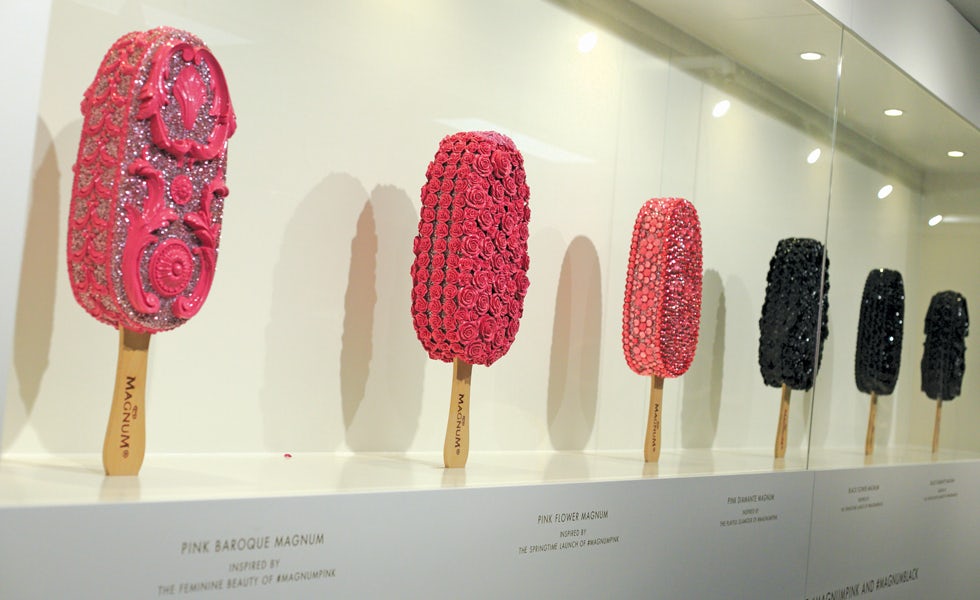Seven brands reviving the ‘must see’ pop-up
The original purpose of pop-ups was to create unmissable but short-lived experiences, but the message has become muddied as pop-ups become semi-permanent fixtures on high streets and in retail spaces, making the challenge of standing out much more difficult

There is a pop-up for everything from Game of Thrones to Breaking Bad, taking forms as diverse as Bompas & Parr’s cloud of alcohol in a tunnel and The Art of Dining’s high-end school dinner. However, for marketers that have been creating immersive pop-up events for years it is becoming a crowded market.
Brands, therefore, have a challenge to continue capturing attention and to maintain the ‘must see’ feel of a pop-up. It is difficult for brands to create stand-out when many pop-ups end up taking semi-permanent positions on high streets and in retail spaces.
Here are seven brands that are attempting to take the pop-up back to its roots.
1. Comfort
Last month, detergent brand Comfort created a pop-up, the Comfort Intense Garden, at London’s Covent Garden for one day. The idea was inspired by children’s book The Secret Garden and featured flowers made from clothes sourced at Oxfam and washed in the Comfort Intense range. Senior brand manager Fernanda Tubini-Roberts believes a pop-up should be considered as a one off experience available for a short time.
She says: “As a brand, Comfort is dedicated to embracing new and exciting experiences, and the immersive garden is a way to help reclaim the word ‘pop-up’. The garden gave consumers a tangible and theatrical experience.”
More than 6,000 people entered the garden, which was created with agency iD Experiential, during the day and more than 12,500 samples were given away to drive trial amongst consumers. “Placing the Comfort Intense Garden pop-up in such a high footfall location meant that it was disruptive,” explains Tubini-Roberts.
2. Benefit Cosmetics
Cosmetics brand Benefit creates a “fear of missing out” to cut through the noise of other pop-ups that last for longer periods of time. “We do put a deadline on [activity],” says Kyra Oates,
head of events and promotions at Benefit. “The phrase pop-up gives a sense of urgency: people will know it’s there but that it will soon be gone.”
For the of launch its new mascara, Benefit wanted to create differentiation from it existing mascara lines, and so set up a shop for a month in London’s Soho. The brand worked with
event production company The Persuaders and pop-up specialist Appear Here.

It took over three floors of a town house, two of which were dedicated to the new mascara and the third was a bar that opened at 6pm. Rather than relying on only social media, which included competitions to win a table at the bar for fans and their friends, the brand also worked with neighbouring businesses.
Benefit teamed up with nearby members’ club Soho House and offered to do the hair and make up of the employees before their shifts. If the club was experiencing a busy period, Benefit took the overflow of guests.
Oates says the brand prefers any activity to not be in a location where it is already trading, and not to be a replica of the boutiques that it already has. “There is no point offering what we have elsewhere but it is still a good opportunity to drive business in store, online or to retailers nearby,” she adds.
3. Rosa & Clara
Founder of Rosa & Clara Designs Jessica Hayman argues that it is difficult to get cut-through with a pop-up. She says: “It is a bit tricky – if it’s not something that is quirky or food related, it is difficult to get noticed and get publicity, but it has given me great content for social media. I feel like I have been able to make noise about [our pop-up].”
The business set up a shop that opened last month for one week, the first time it has done so alone having previously created pop-ups with other brands through StartUp Britain initiatives.
The location chosen for the pop-up was a space hosted by charity Craft Central, which promotes fine craft and design skills by hosting a different designer each week, thus giving the feel of a “genuine pop-up”. People in the surrounding area “are used to the concept and know it will change [on a weekly basis]”, says Hayman.
4. and 5. Unilever – Magnum and Cornetto
Unilever’s ice cream department recently had two pop-up challenges: setting up Magnum’s third annual ‘Pleasure Store’ and launching a new temporary experience for its Cornetto brand.
Florence Howell, marketing manager for Magnum, Cornetto and Wall’s ice creams, says: “Pop-ups have become trendy and there have been a lot of pop-ups in London in the past year, so our challenge for both brands was how to make a pop-up really fresh and different for the target audience to give them a [new] experience of the brand.”
Howell believes that the Cornetto’s “immersive theatre” experience, which finishes this week at Westfield London shopping centre, is different to anything the brand has done before (see case study below).
For the Magnum brand’s pop-up store, which is currently open in Covent Garden, it is the personalisation aspect that creates stand-out, according to Howell. The activity is popular with consumers and each year the location and the available toppings for people to create their own ice cream change.

6. Castello
Cheese brand Castello’s London leg of a world tour, which visited New York, Copenhagen and finished up in Stockholm last month, needed to go beyond a pop-up shop that merely showcased a few products for sale.
It hired a space in London’s Shoreditch that was big enough to create impact with two areas: one for its 40-plus cheese lines and the story behind them, expanding its marketing beyond the seven lines it sells in supermarkets; and another for a wine bar and café, so consumers could enjoy the cheese in an appropriate setting.
Castello’s shop is an area full of temporary spaces for art as well as shops and restaurants. It is located only a short distance from the long-established ‘pop-up’ shopping destination Boxpark, where retailers occupy recycled shipping containers. However, this has worked in the cheese brand’s favour.
Brand manager Julian Merritt says: “Our [location] was an area where pop-ups were more common as we wanted to be somewhere where people were used to seeing that kind of thing and we needed a lot of space. We were also actively trying to bring our brand to a younger audience.”
Castello also ran events for fans who could enjoy wine pairing evenings at the pop-up by entering a competition on social media. The evening event scored the brand a mention on Channel 4’s Gogglebox programme.
“It’s about more than opening a shop and saying ‘here are some products’,” says Merritt. “It wasn’t about selling the most amount of products and making money out of the shop. Ultimately, it’s about generating the excitement and momentum behind the brand and what we wanted people to come out with was a ‘wow’ factor.”
Merritt also says the pop-up would not be an annual event as it served its purpose of building brand awareness and it would now be a case of “capitalising on that”.
7. Bailey Nelson
Eyewear brand Bailey Nelson used a space at Old Street station brokered though Appear Here as a way to differentiate from other sites that have a concentration of pop-ups, but it also did not push messages out about the fact it was there, unlike most brands.
Ben Moffitt, co-founder of Bailey Nelson, says: “There are two ways that people utilise pop-ups. One way is that they drive a heap of traffic to a short-term place to drive maximum profitability, such as a restaurant, the sole purpose being a profitable place. For us, it’s about brand awareness and as a consequence the pop-up was the communication.”
Moffitt adds: “It was about site selection, because we weren’t competing with other pop-ups through communication on other channels such as social. We used the physical presence
and weren’t competing with others in the space. If you walked past, you could experience it.”
Old Street Underground station is one of Appear Here’s flagship locations. According to its own statistics, from the 150 brands that have popped up in the space exit surveys show that 80% say they would book the space again. For Bailey Nelson it was able to test an area away from its physical store.
Looking at the examples of the latest brand activity it is clear that brands which are successful in the pop-up arena are those that know exactly what the benefits are, rather than launching activity to follow a growing trend.
Brands have been doing this for many years and the rise in popularity of the concept has only spurred more creative thinking in what gets people into these temporary spaces.
That is not to say that activity cannot last a long time, but the idea of the pop-up could also benefit from retaining a connection to its original definition. If it is well received, brands can always make it last longer.
Benefit, for example, is taking its activity on tour across the country. Oates says: “We get feedback of people missing out, so there is potential if it’s well received to do more with it.”
Case study: ‘Cornetto Beyond the Screen’
For the film ‘Two Sides’, part of the Cornetto Cupidity series exploring the trials and adventures of teen love, the brand used a 3D-sound cinema in an immersive theatre project called ‘Cornetto Beyond the Screen’ at London’s Westfield shopping centre.
“It’s really different to anything we have done before,” says Florence Howell, marketing manager for Magnum, Cornetto and Wall’s ice creams. “It was about breathing new life into a pop-up; our audience are millennials so they’re looking for an authentic experience.”
Designed by experiential agency iD Experiential, the activity saw a retail unit transform into a pop-up art deco theatre showing the film. The camerawork switches viewpoints throughout the film, swapping between the two lead characters to hear their thoughts and make visitors feel as if they are in the story.
As part of the immersive theatre experience, the characters appear in the cinema and viewers participate in the narrative.
Howell adds: “A pop-up needs to be interesting and different for a consumer to visit it. We have shown that we can do that differently this year. I’ve not seen a brand use immersive theatre before and that has taken people by surprise.”






